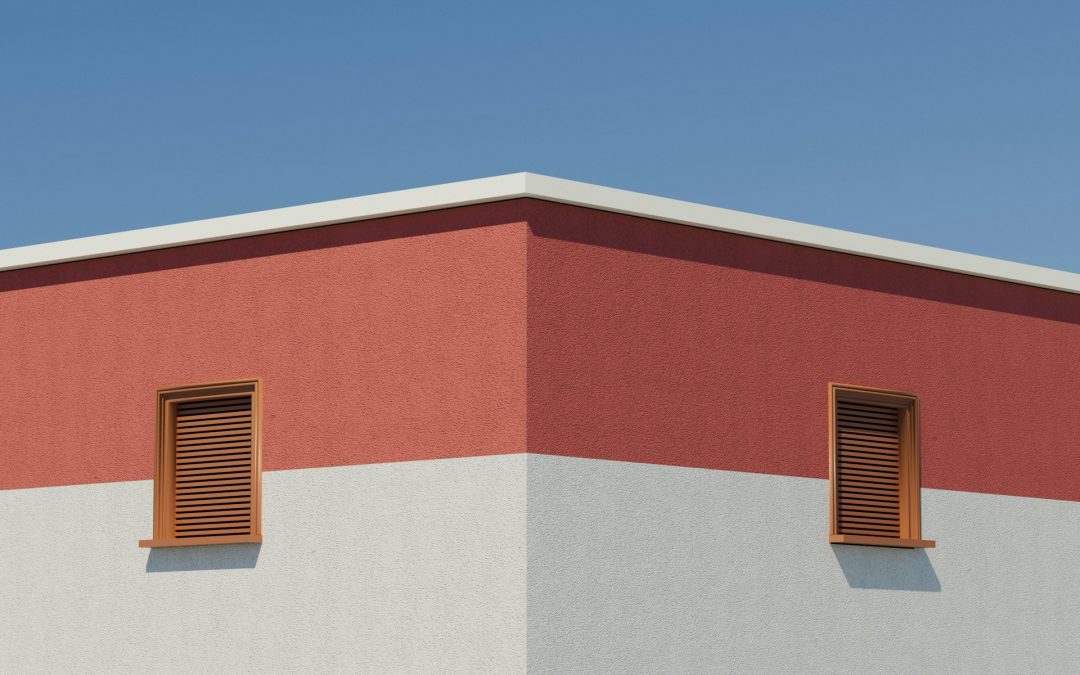Flat roofs are a popular choice for many commercial buildings due to their modern look and efficient space use. However, they come with their own set of challenges, especially when it comes to drainage. Unlike sloped roofs where gravity helps water flow away, flat roofs can struggle with water drainage, leading to problems like leaks or even structural damage.
Water pooling on a flat roof can damage roofing materials and shorten their lifespan. This can lead to frequent repairs and higher maintenance costs if not addressed promptly. Therefore, understanding how to improve drainage on flat roofs is crucial for property owners looking to maintain their roof’s integrity and save on future expenses.
In this article, we will explore common flat roof drainage problems and effective solutions to tackle them. Whether you’re managing a commercial building or just curious about flat roof maintenance, knowing how to ensure proper drainage is key to protecting your investment and extending the life of your roof.
Understanding Flat Roof Drainage Problems
Flat roof drainage issues are common and can cause significant damage if left unaddressed. One of the main causes of poor drainage is a lack of proper pitch, which prevents water from flowing toward drains. Debris buildup from leaves or twigs can also block water pathways, leading to unwanted accumulation.
Pooled water on a flat roof is concerning because it can degrade roofing materials over time. This standing water can seep into small seams and cracks, leading to leaks and weakening the structure. Identifying and fixing drainage problems promptly is essential to preserve the integrity of the roof.
Signs that your flat roof lacks proper drainage include visible puddles that remain long after rainfall has stopped. Additionally, if you notice water stains on the ceiling or mold growth inside the building, these could be indicators of water infiltration caused by poor drainage. Regular inspections from a qualified professional can help detect these issues early, ensuring necessary repairs are managed swiftly.
Effective Solutions for Improving Drainage
Improving drainage on a flat roof involves several strategic solutions. Proper installation of drainage systems, such as internal drains or external gutters, is crucial. These systems need to be free from blockages to allow water to flow effectively. Ensuring drains are installed at the lowest points of the roof is key for gravity to aid in water removal.
Sloping is another vital aspect of flat roof design. Although flat roofs seem level, they should actually have a slight slope to guide water towards the drains. Adjusting or adding a slope may be necessary if pooling is a persistent issue.
Incorporating additional features like scuppers, which are outlets cut into the parapet walls, can also enhance drainage. Roof drains can be added to facilitate water movement, reducing the risk of pooling. These elements must be installed correctly to optimize their function. By strategically implementing these components, property owners can effectively manage water flow and maintain their roofs in good condition.
Maintenance Strategies for Optimal Drainage
Keeping your flat roof draining properly involves regular maintenance routines. A great place to start is by establishing routine cleaning schedules for drains and gutters. Clearing away leaves, dirt, and other debris helps prevent blockages that can lead to water pooling. Regular cleaning, especially after storms or seasonal changes, ensures that water can exit the roof easily.
Routine inspections are another key strategy in maintaining optimal drainage. Checking your roof for early signs of blockages or damage can help catch problems before they worsen. You can look for things like cracks, clogged drains, or areas where water might be pooling. Having a professional inspect your roof bi-annually is also a good idea, as they can spot subtle issues that might go unnoticed.
Preventive measures, like installing gutter guards or leaf strainers, can help reduce debris buildup. These simple additions keep unwanted items from entering the drainage system, thus maintaining clear passages for water flow. Investing in these straightforward strategies can prevent future problems and extend your roof’s lifespan.
Choosing Appropriate Roofing Materials
Selecting the right roofing material can greatly impact drainage effectiveness on a flat roof. Materials like TPO (Thermoplastic Olefin) and PVC (Polyvinyl Chloride) offer significant benefits. Both materials are durable, reflect sunlight, and resist dirt and bacterial growth. They also have heat-welded seams, which prevent water from seeping in, reducing the risk of leaks.
The material you choose affects how well your roof manages water. Opting for materials that naturally repel water and are resistant to weather damage ensures your drainage efforts remain effective. These materials often have longer life spans and maintain their integrity better under harsh conditions.
When selecting durable roofing options, look for materials with proven performance records in extreme weather. It’s also wise to consider what maintenance will be required for each type. Consulting with a roofing expert can provide valuable insights on the best materials for your specific needs, ensuring your selection supports optimal drainage.
Conclusion
Addressing drainage issues on flat roofs is crucial to maintaining their integrity and function. By understanding common problems and implementing viable solutions, property owners can effectively manage water flow and protect their investments. Regular maintenance ensures drainage systems work efficiently while choosing the right materials can prevent future complications and reduce maintenance needs.
When it comes to ensuring your flat roof is in top condition, Mike Huddleston Roofing Systems has the expertise you need. Whether you’re looking to install new drainage systems or need advice on roofing materials, our team is ready to help. Contact us today for a consultation and take the first step toward solving your roof drainage challenges.

